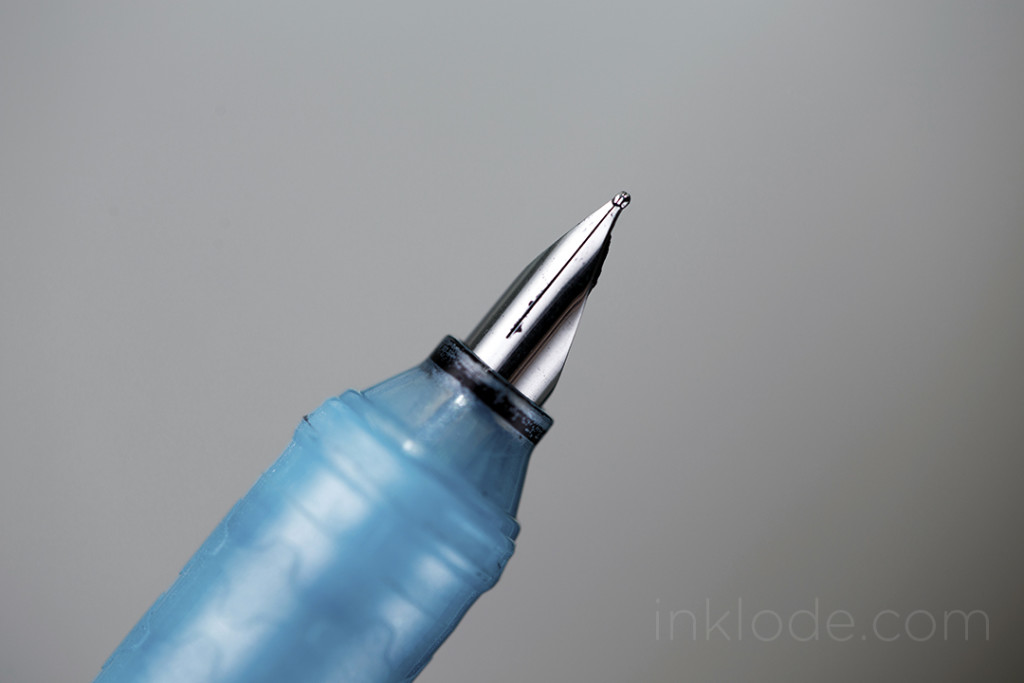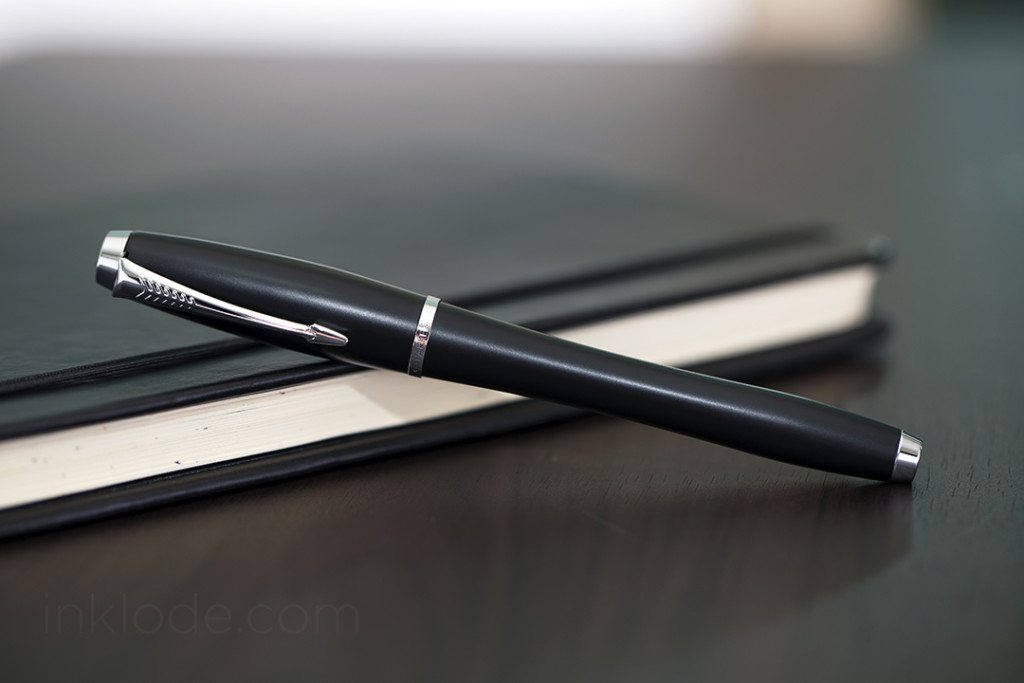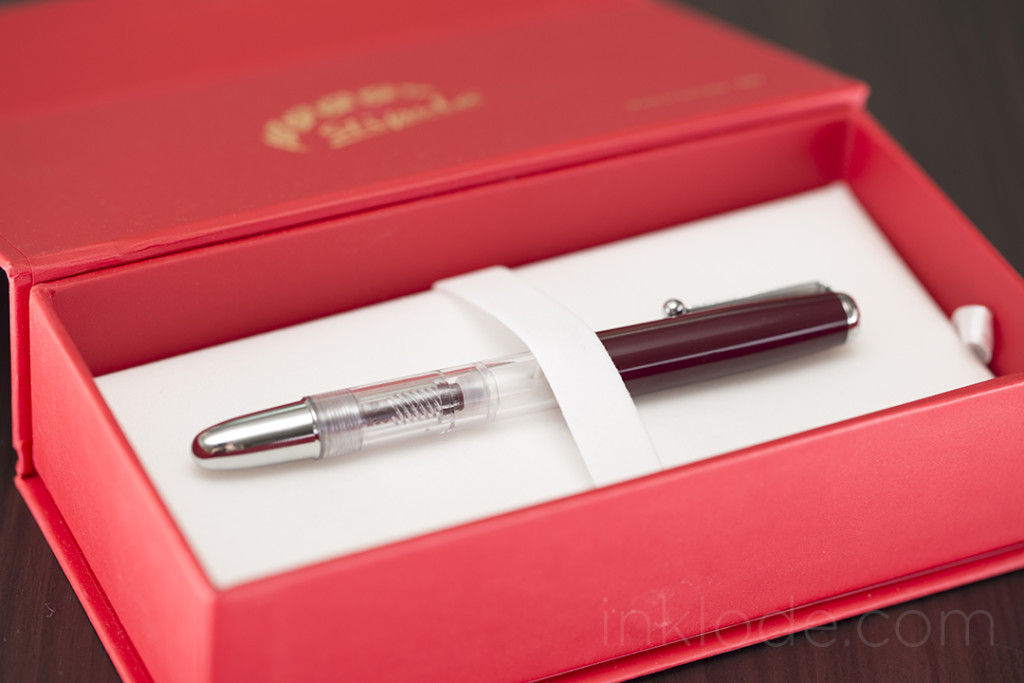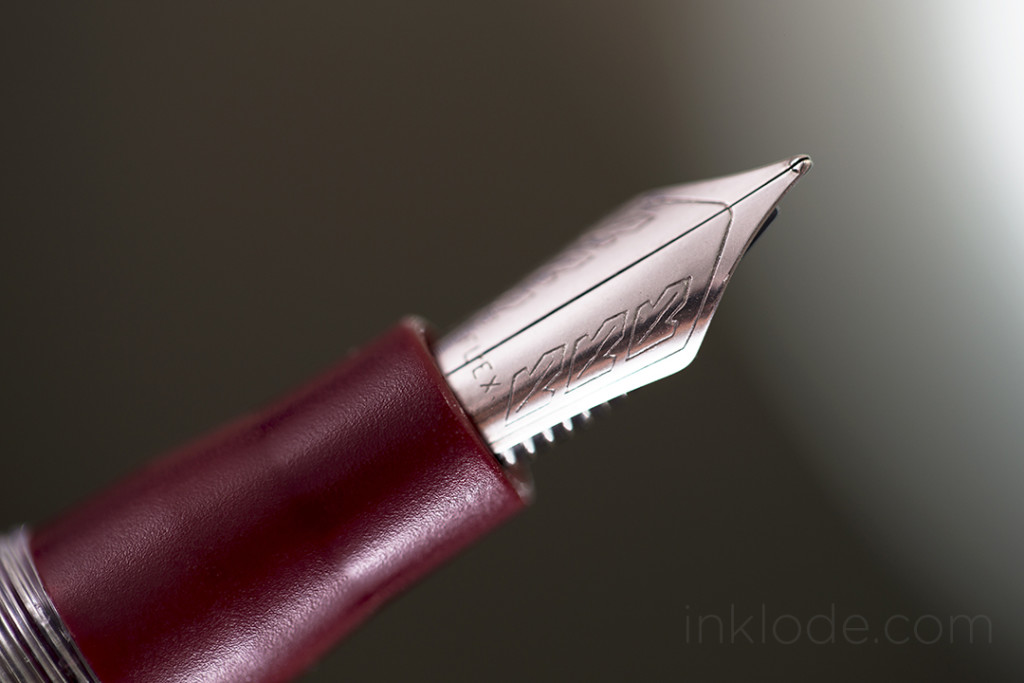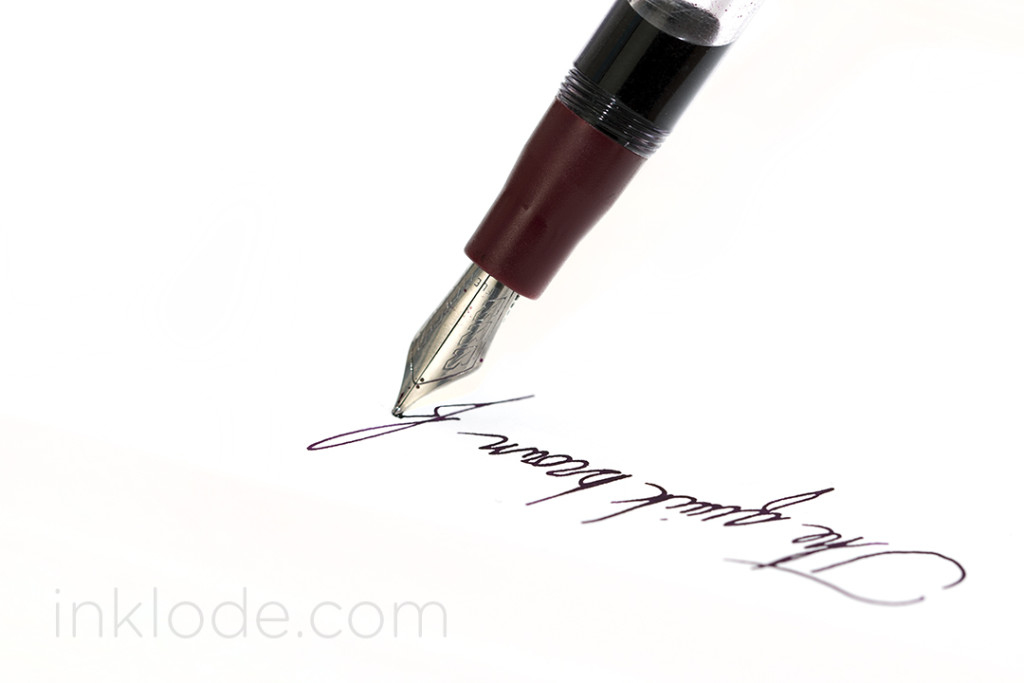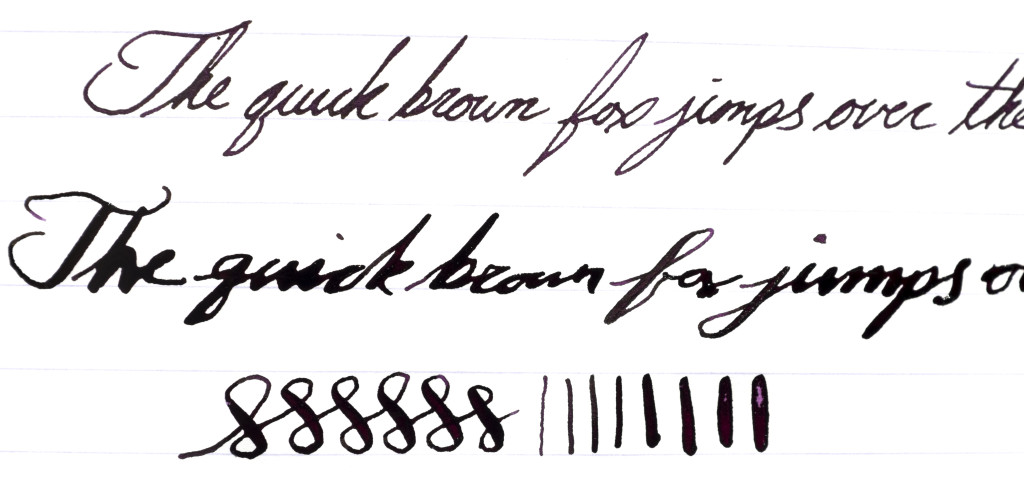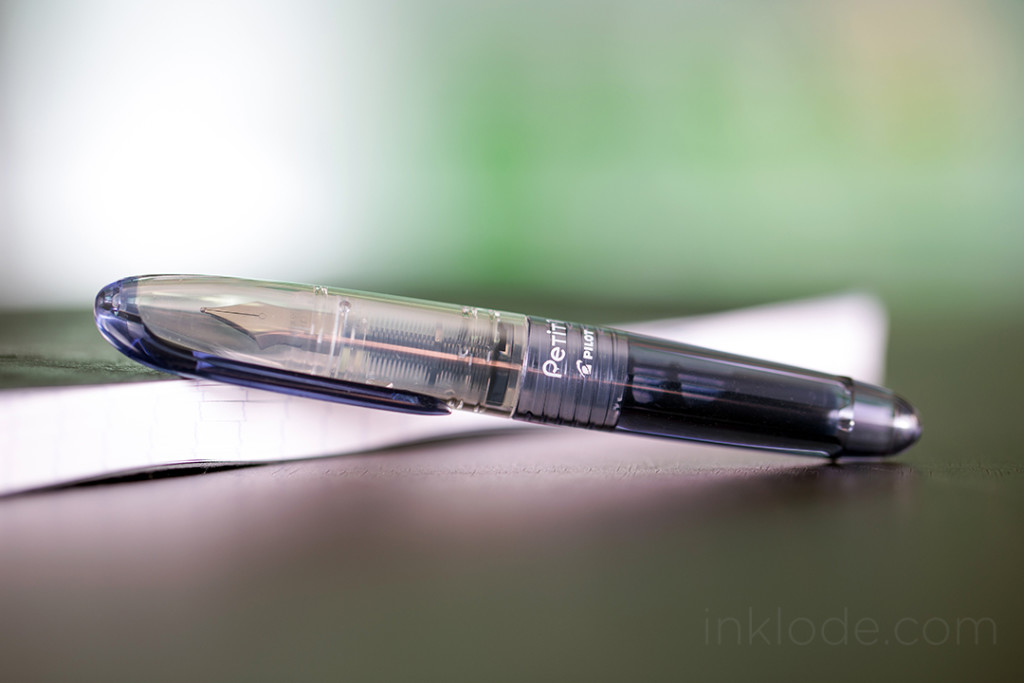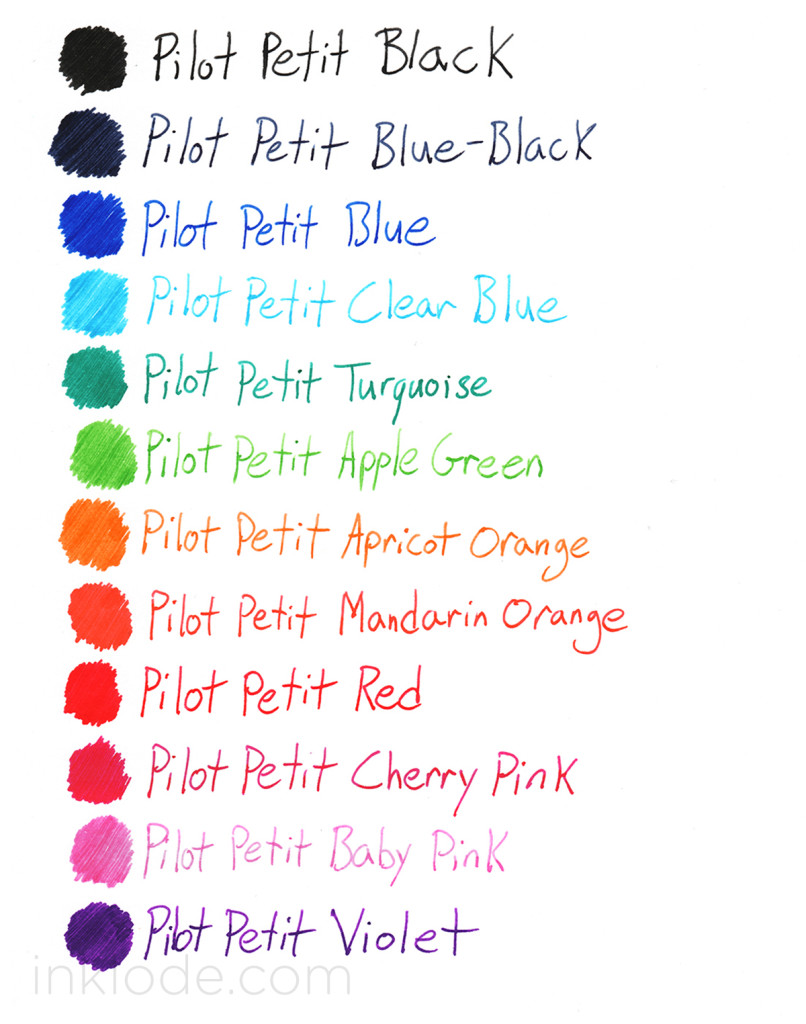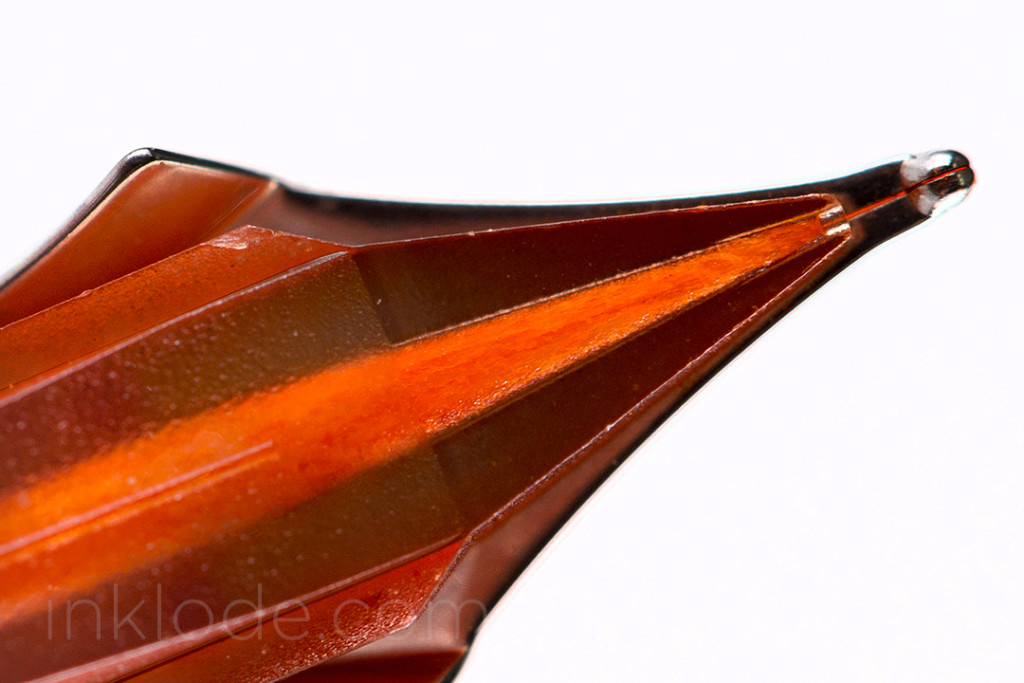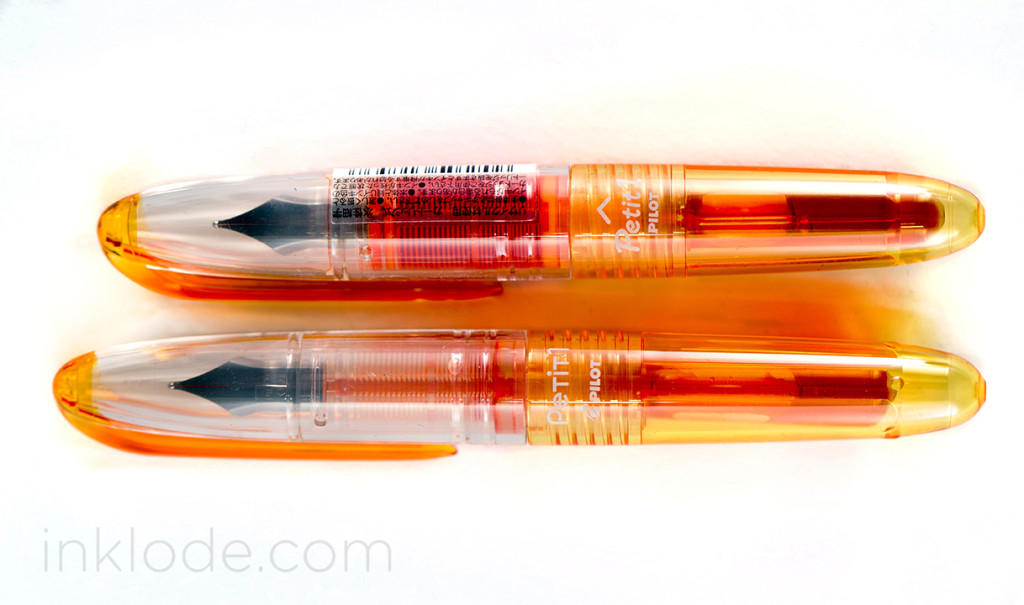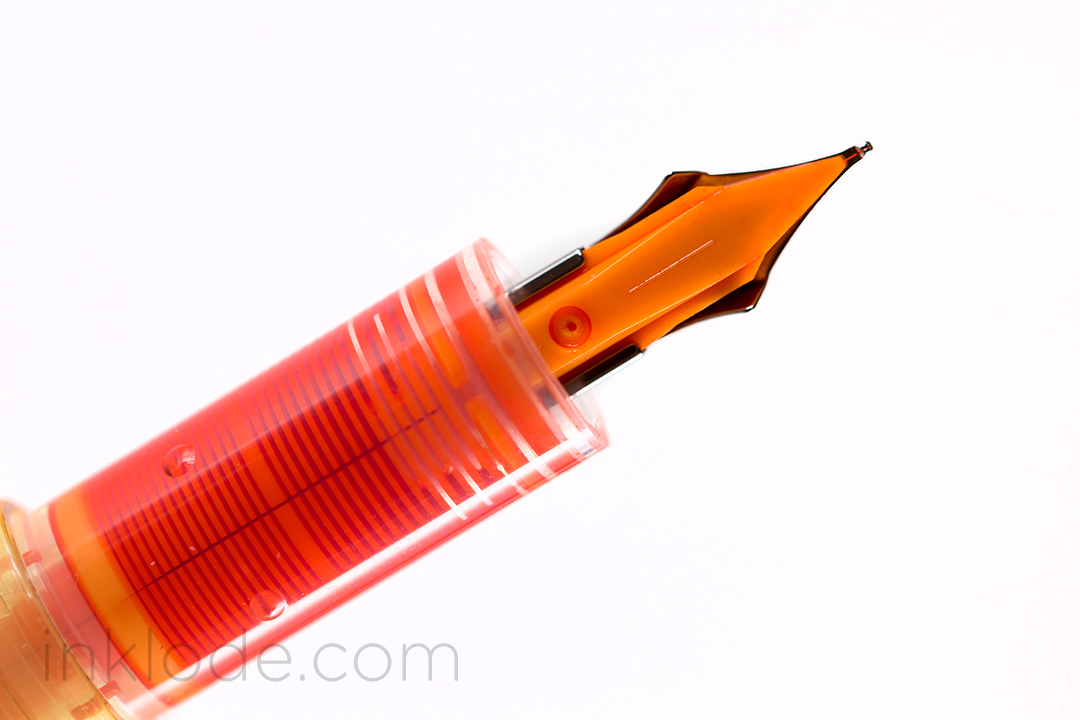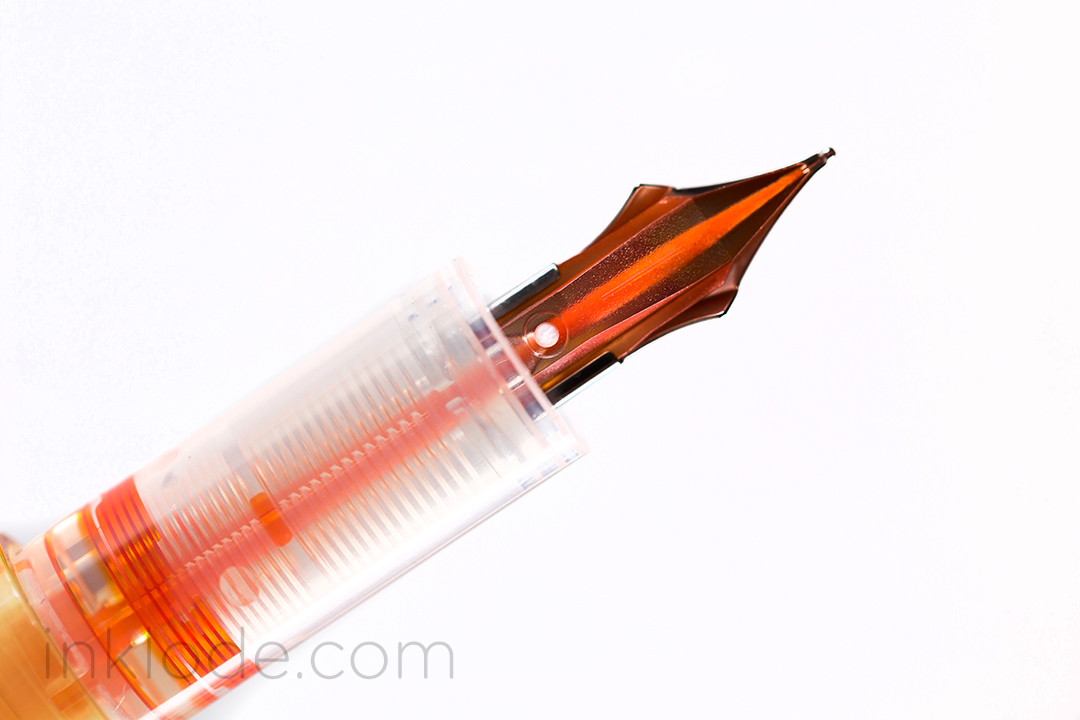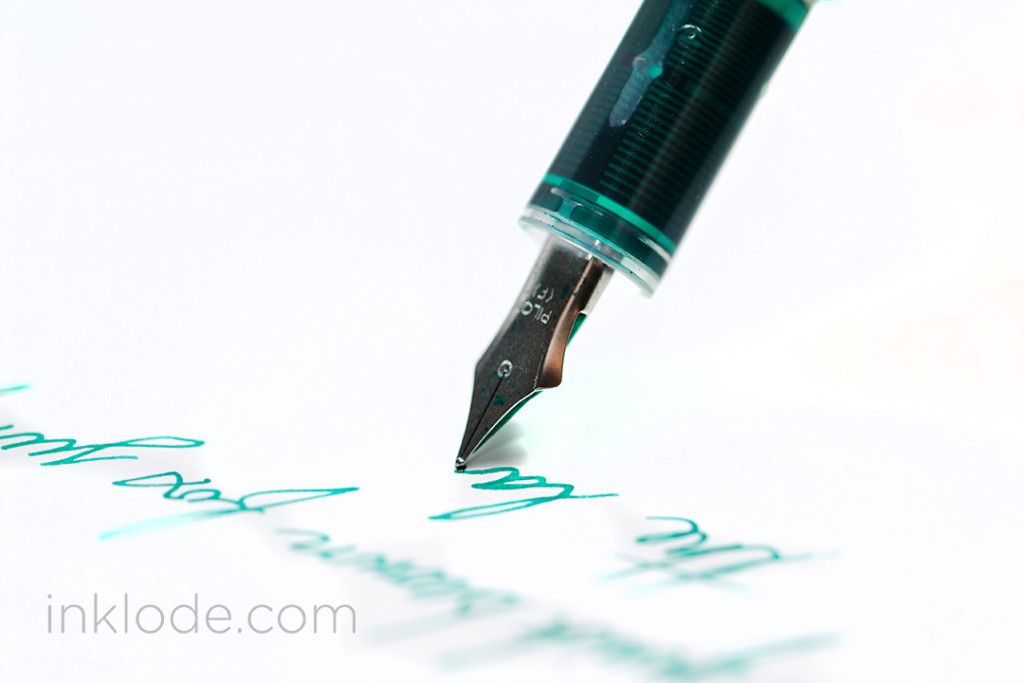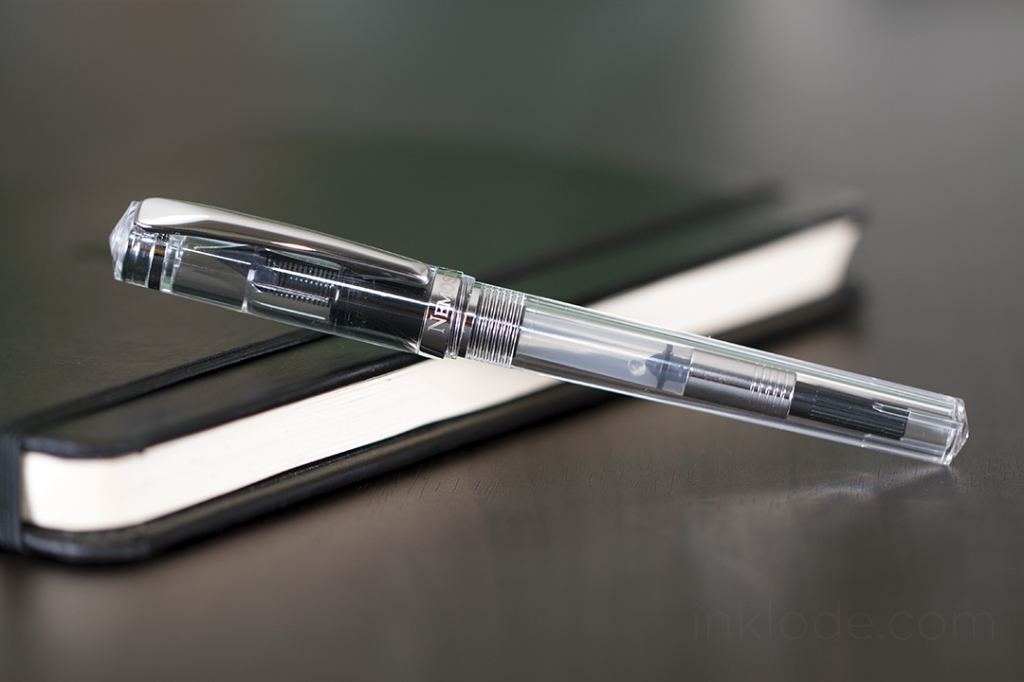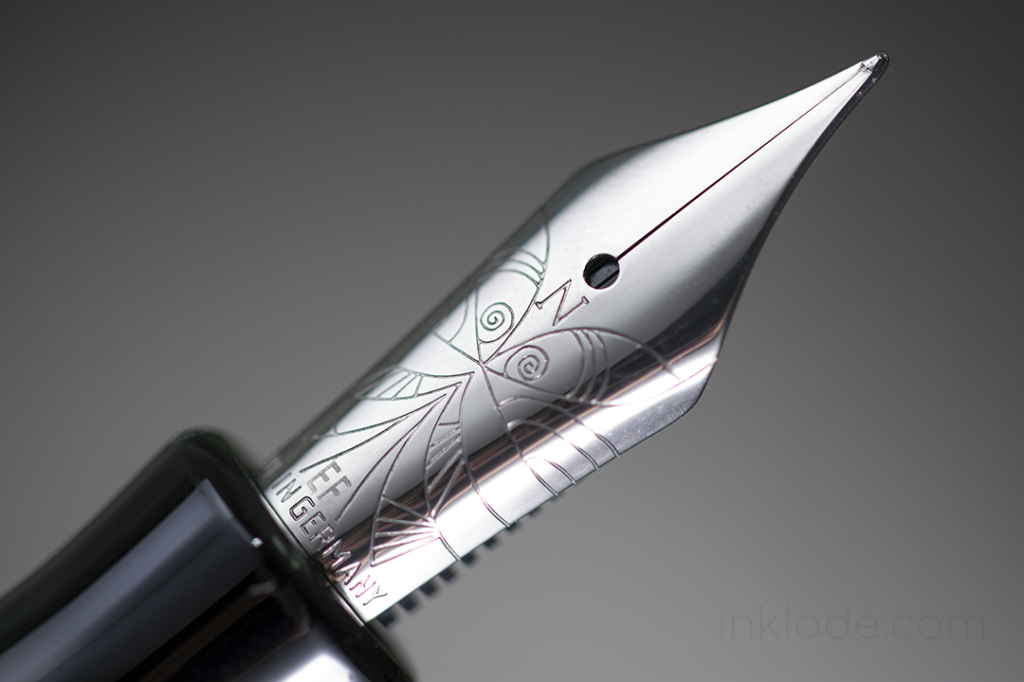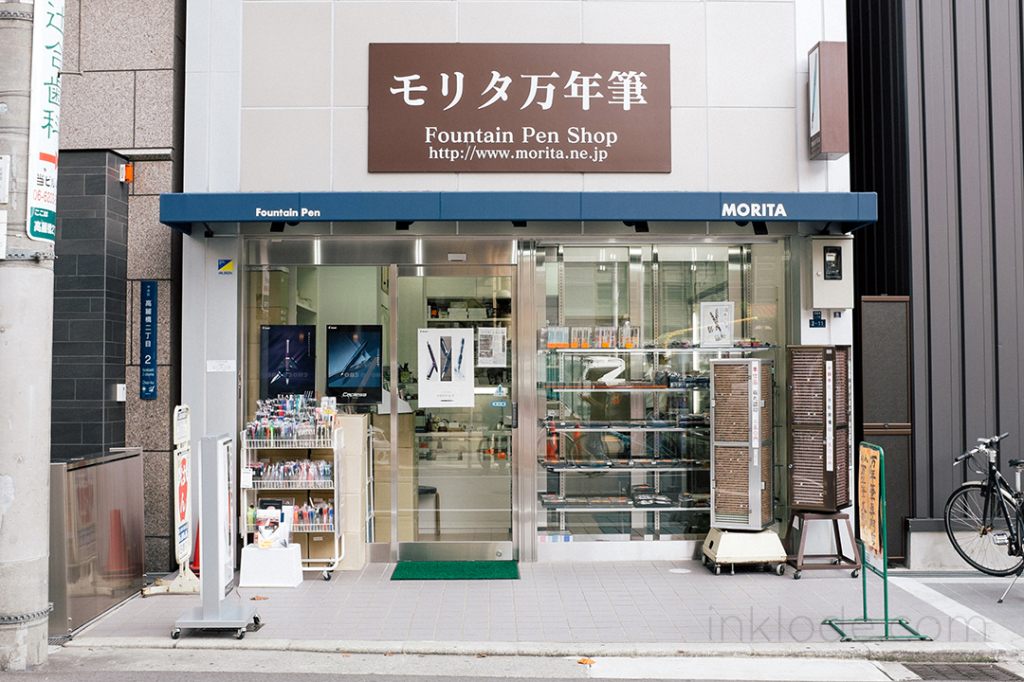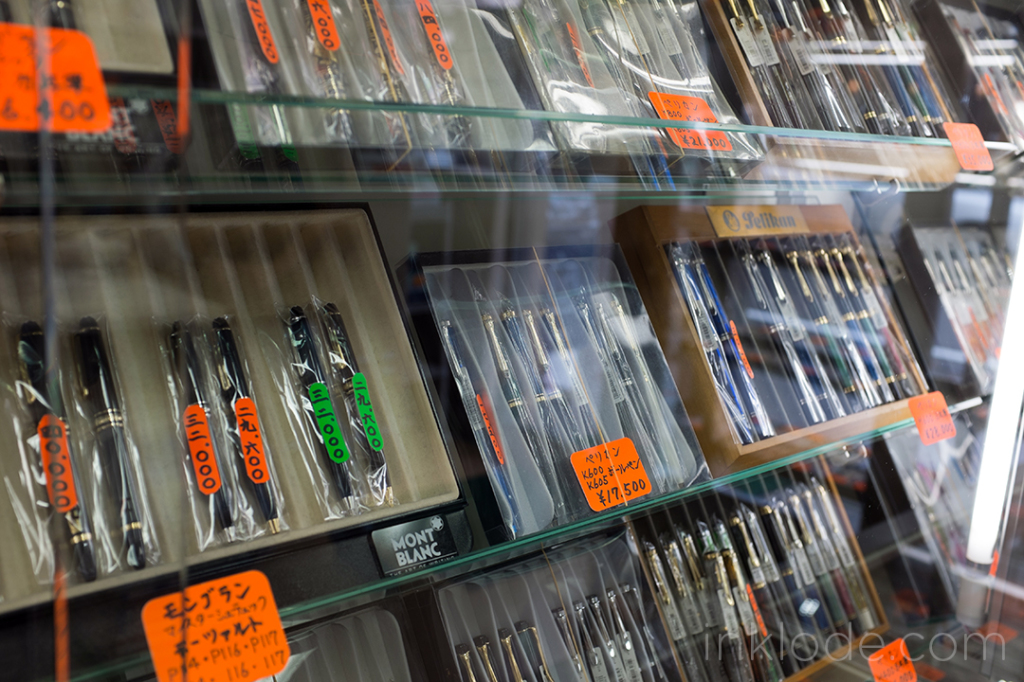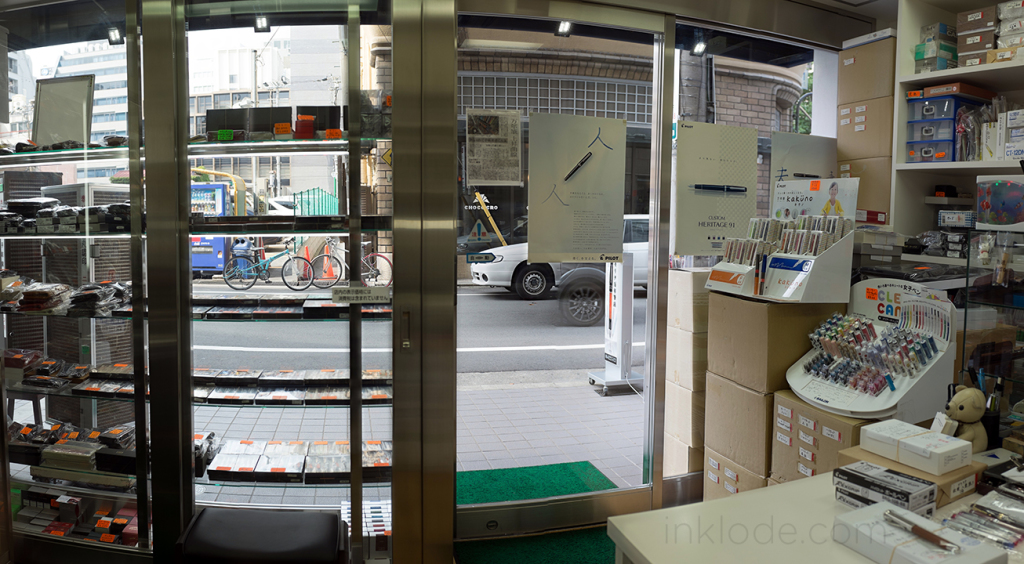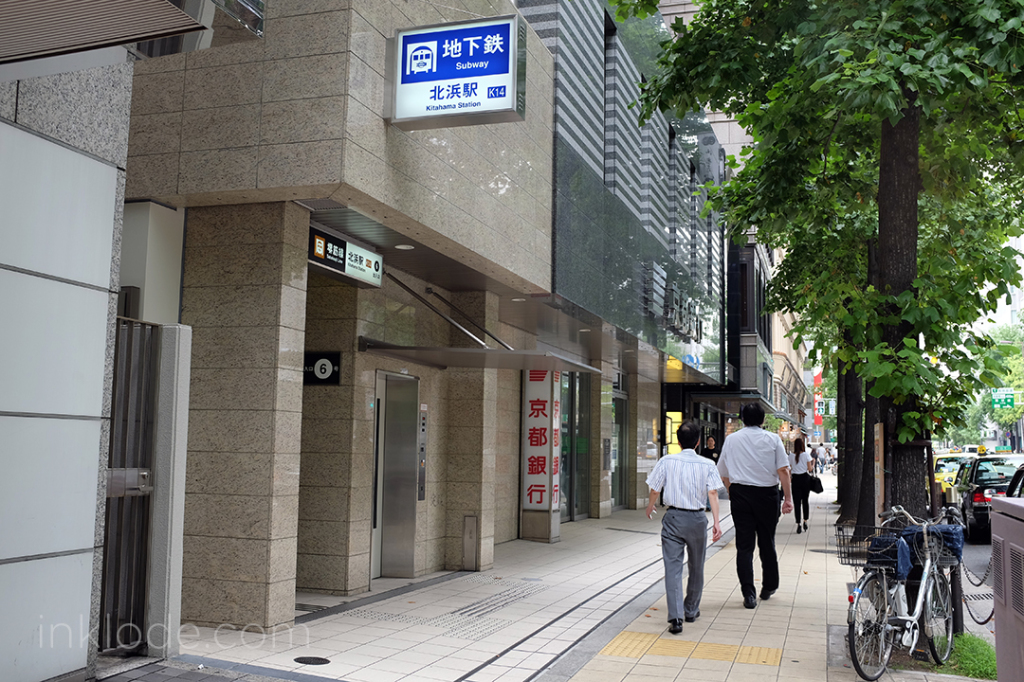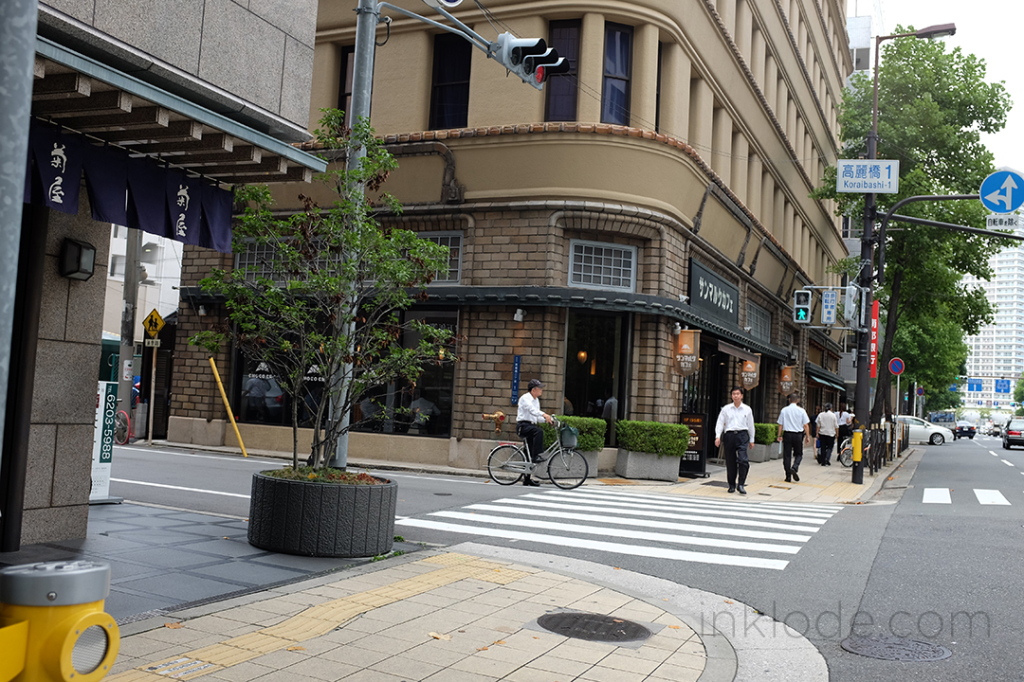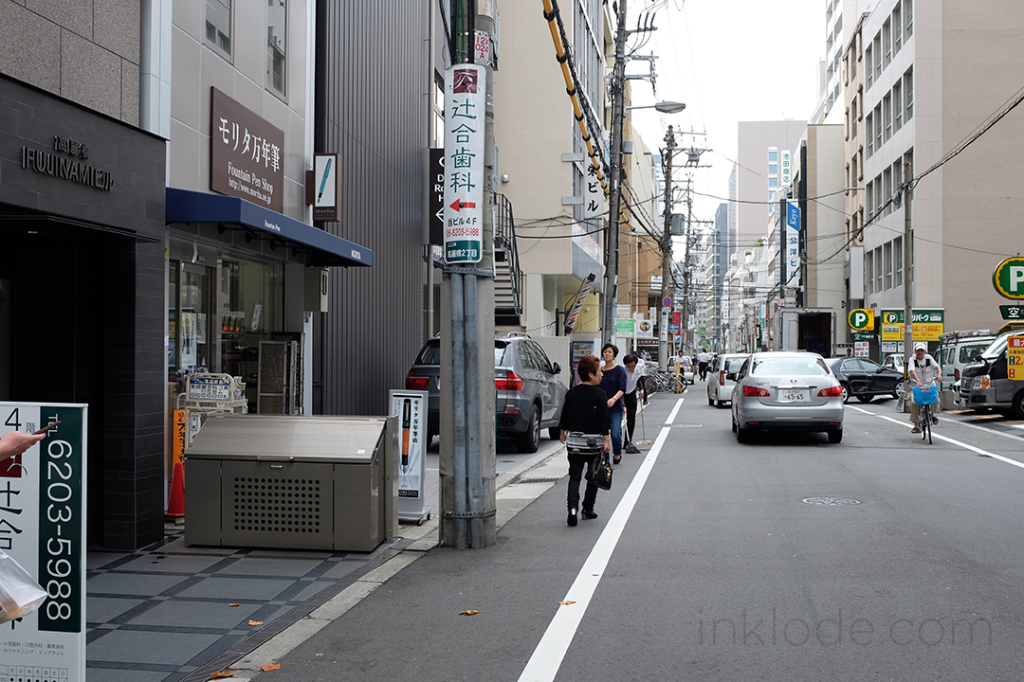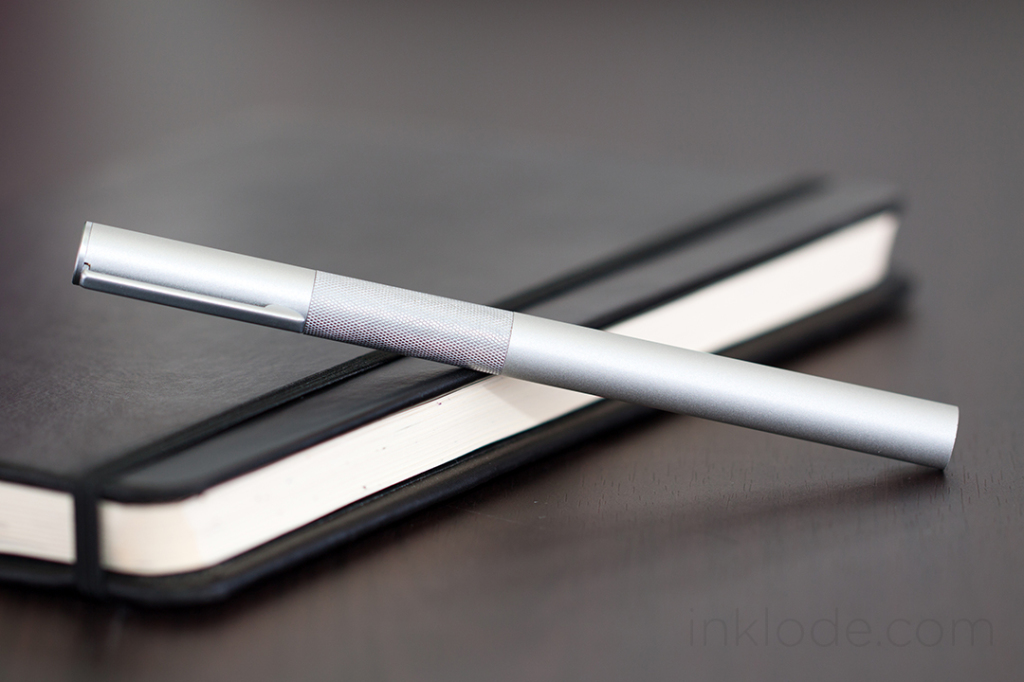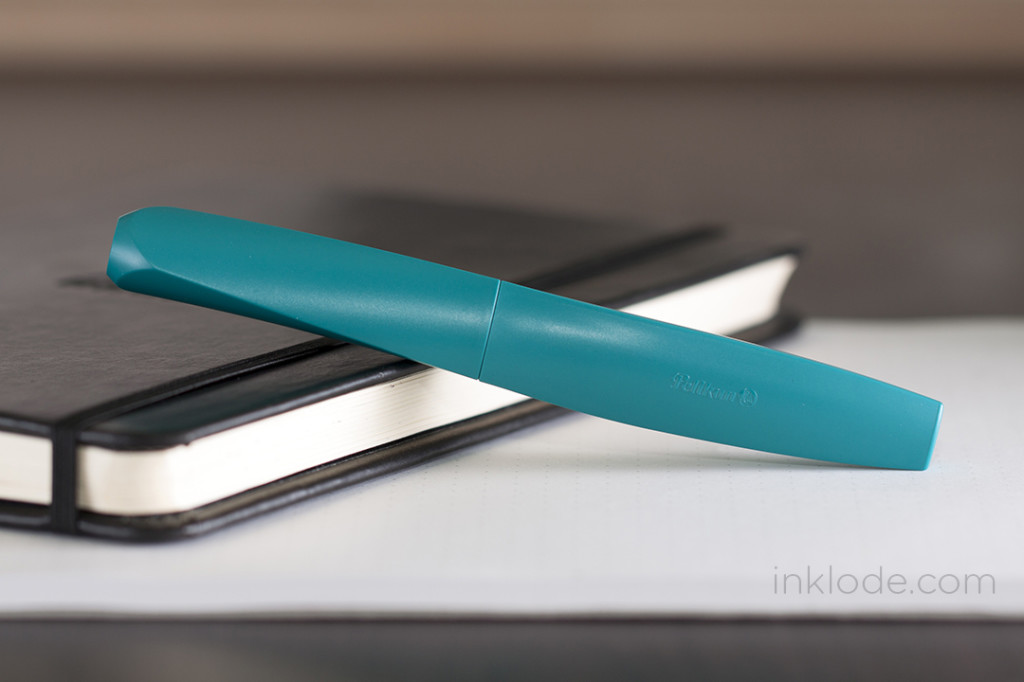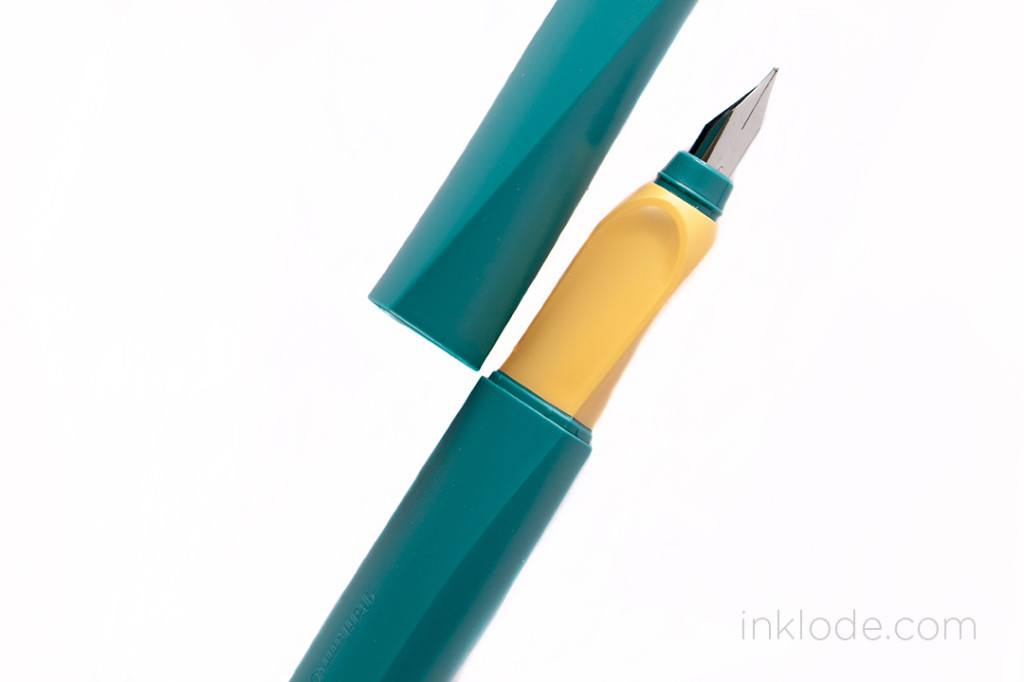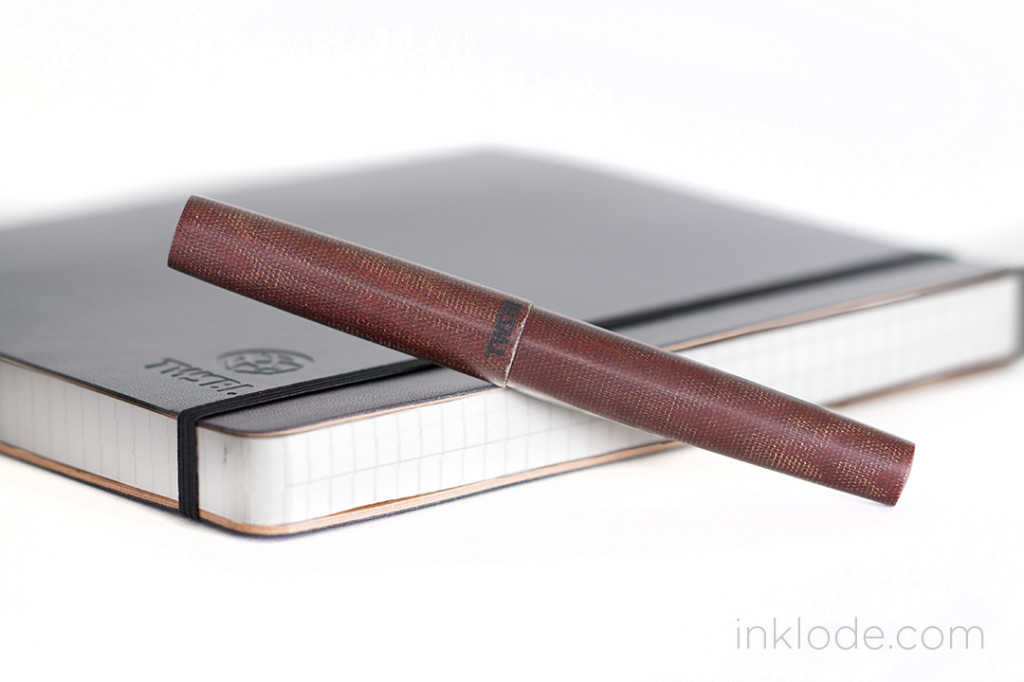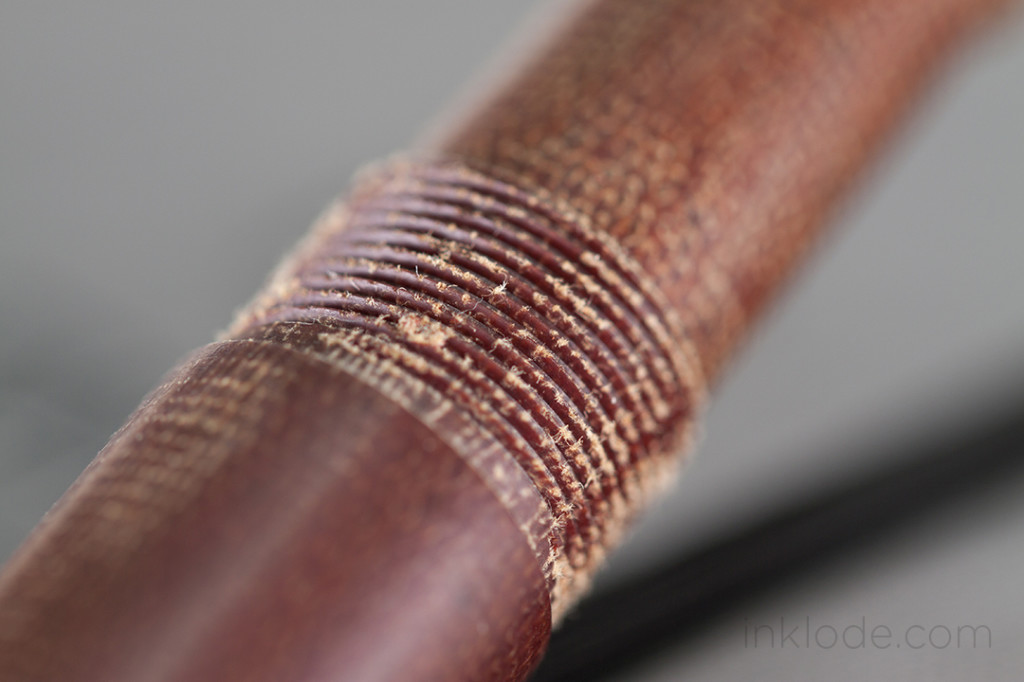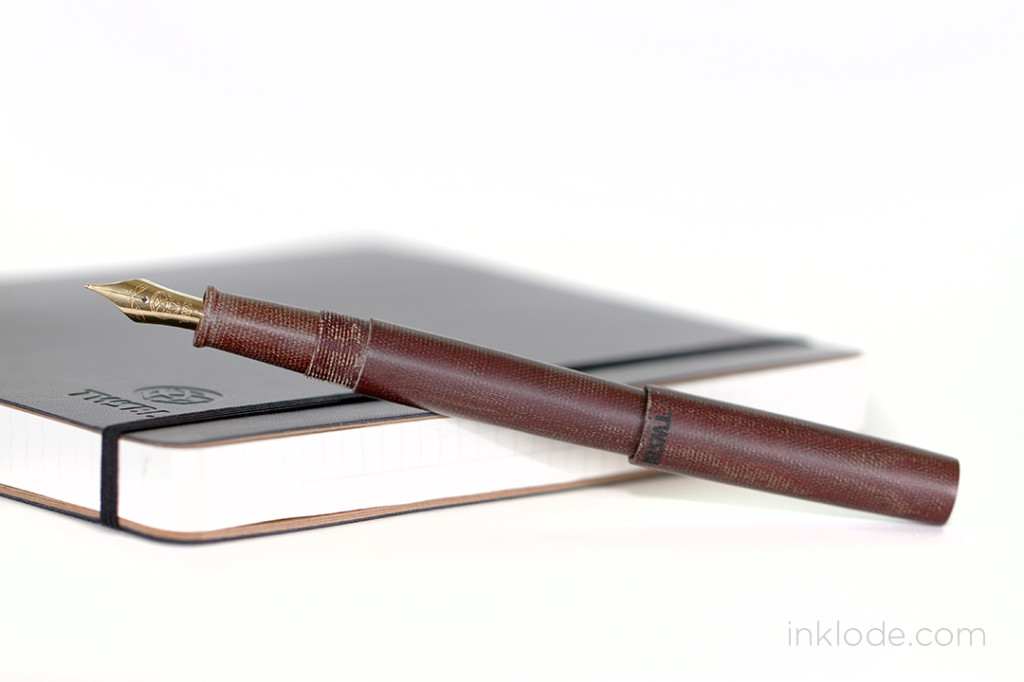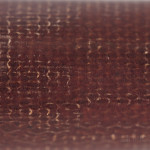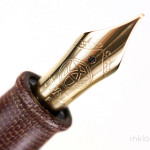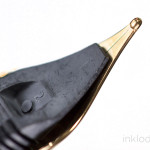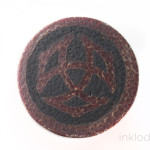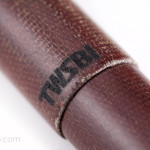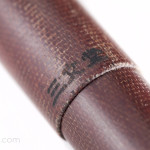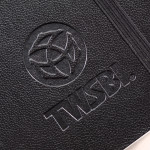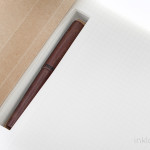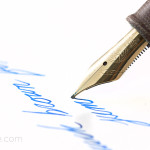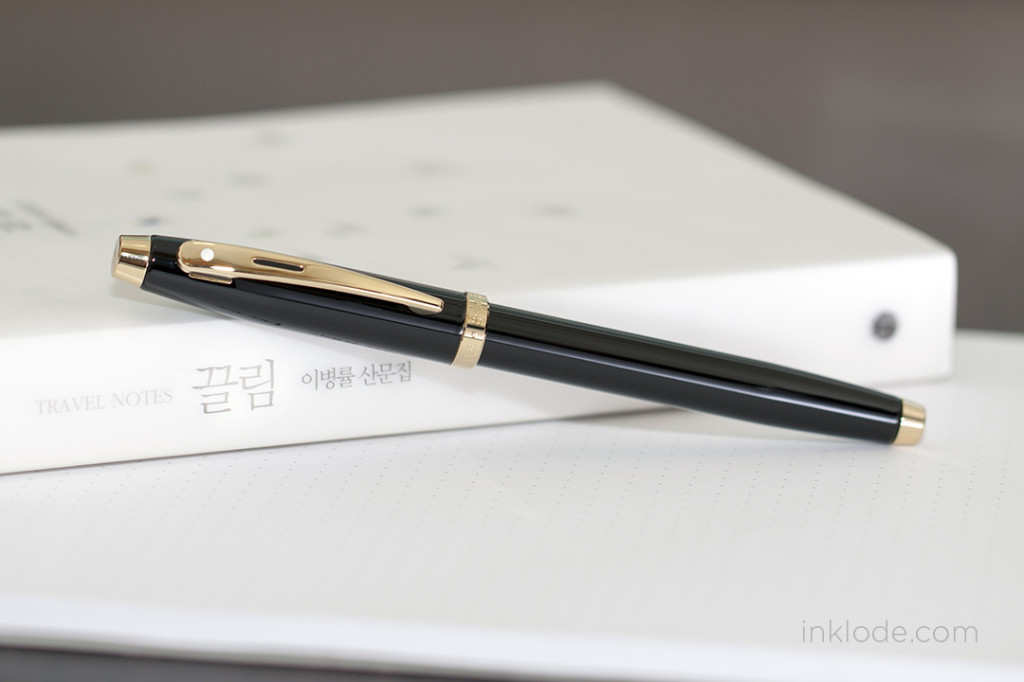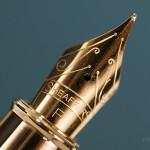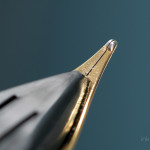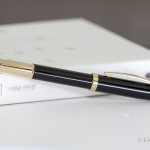Morning Glory CalliCally Fountain Pen
- By Adam
- In fountain pens
- With 2 Comments
- Tagged with CalliCally fountain pen Morning Glory
- On 10 Jul | '2015
Anyone who is familiar with Korean stationery supplies will be probably know the name Morning Glory. Having been one of the nation’s top stationery supply manufacturers since its inception in 1987, when it first entered the market, Morning Glory has expanded its operations to over 20 different countries. Though they are best known for manufacturing notebooks and office supplies with cute cartoon characters on them, they have also seen fit to produce an affordable (in the $2 USD range), entry-level fountain pen for the budding enthusiast—the Morning Glory CalliCally.
Appearance and Design
There is no doubt that this is a cheap pen. The soft blue-green color scheme and obvious branding stamped onto the side of the pen ensure that it fits in perfectly on a shelf between the ballpoint pens and the Platinum Preppy fountain pens. Though the plastic material of the barrel feels light, it does not seem too weak to withstand daily wear and tear. On the other hand, the grip section feels like plastic borrowed from a toy with its funny little grip pattern imprinted into it. Despite all of this, holding the pen isn’t too uncomfortable. There is a significant step down from the barrel to the grip which some might find troublesome. The cap posts deeply and securely so there is no concern of it falling off while writing, and it clicks on to the front end with an equal amount of security. The nib is tiny and features no decorations or branding of any kind (not that there is much space for any of that). Overall, the size of the pen is adequate, but the heft of the pen leaves me wanting. The cap contains enough plastic to actually make the pen somewhat back-heavy when posted. Not enough to cause any issues, of course. The pen is accompanied by six mini-cartridges filled with Morning Glory’s proprietary black ink.
Writing Experience
Initially, the nib would not lay down a consistent line and the feed could not channel ink properly. After tweaking the nib a bit, the pen finally started to write. The nib is surprisingly smooth and I could see how the pen might be a great beginning tool for a young student. My only concern would be the slightly fragile nature of the construction versus something more solidly built like a Platinum Preppy. There is no flex in the nib. If you even attempt to flex the nib, it will become bent beyond recognition and will cease to function. Following the initial adjustments, the feed kept up perfectly and there was no skipping of any kind. It provided a perfectly acceptable writing experience that actually became rather pleasant after a while. The only issue I had was that the lightweight nature of the pen did not suit me for longer writing sessions. As a side note, the ink in the cartridges that come with the pen is surprisingly water resistant and a very deep shade of black. I might have to acquire more and do some tests with it.
Conclusion
This is a cheap pen, and you get what you pay for. And for (essentially) $2 USD, you get a pen that can write well, comes with several permanent black ink cartridges, and is a bit different from your average ultra entry-level fountain pen. Obviously it is nothing close to a must-have, but if you can get your hands on one, it could be a fun option for someone who appreciates the “quainter” side of life who you are introducing to the wide world of fountain pens.



